

Symptom eingeben - entsprechende Heilpflanzen finden <br> Heilpflanzen - Wissen für Heilpraktiker und interessierte Laien. History of herbalism. Ancient herbalists, including those of Cathay, India, Sumer, Assyria, Egypt, Greece, and Rome, testify to the use of herbs in the treatment of disease.
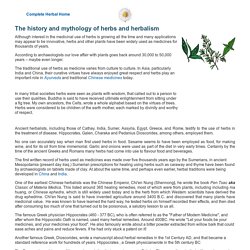
Hippocrates, Galen, Charaka and Pedanius Dioscorides, among others, employed them. No one can accurately say when man first used herbs in food. Sesame seems to have been employed as food, for making wine, and for its oil from time immemorial. Garlic and onions were used as part of the diet in very early times. Certainly by the time of the ancient Greeks and Romans many herbs had come into use to flavour food and beverages. The first written record of herbs used as medicines was made over five thousands years ago by the Sumerians, in ancient Mesopotamia (present day Iraq.) One of the earliest Chinese herbalists was the Chinese Emperor, Chi'en Nung (Shennong), he wrote the book Pen Tsao aka Classic of Materia Medica. The Romans brought many of the popular varieties that we enjoy now to Britain.
Pline : Histoire naturelle : livre XX (traduction française) [XX-XXVII] I et II Du concombre sauvage, XXVI.
![Pline : Histoire naturelle : livre XX (traduction française) [XX-XXVII]](http://cdn.pearltrees.com/s/pic/th/naturelle-traduction-francaise-98090418)
III. De l'étatérium, XXVII. IV. Du concombre serpentin ou erratique, V. V. Magickal Uses of Herbs A-G. The Magickal Properties of Herbs Since most herbs are known by many folk names, use your Find command to find specific herbs on this page.
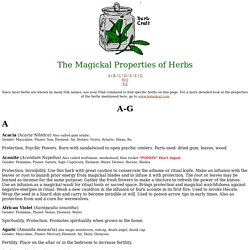
For a more detailed look at the properties of the herbs mentioned here, go to www.botanical.com Acacia (Acacia Nilotica) Also called gum arabic. Gender: Masculine, Planet: Sun, Element: Air, Deities: Osiris, Astarte, Diana, Ra Protection, Psychic Powers. Aconite (Aconitum Napellus) Also called wolfsbane, monkshood, blue rocket *POISON* Don't ingest. Protection, Invisibility. Alberti Magni,... De vegetabilibus libri VII : Historiae naturalis pars XVIII / Ed. criticam ab Ernesto Meyero coeptam absolvit Carolus Jessen.
Datatemplate. Herbs mentioned by A.C. in 777 Numbers refers to paths on the Tree of Life General remarks: It should be generally remarked with regard to the elemental attributions in this column that the seed should be taken as representing Spirit with a slight admixture of Fire, the stem as Fire, the blossom as Water, the leaf as Air, and the fruit as Earth.

Note that the fruit usually contains the seed of the new generation exactly as the Empresses are called the Thrones of Spirit. Remarks on Perfumes (column XLII): These attributions are founded for the most part upon tradition. Some of them are connected with legend, others are derived from clairvoyant observation. Alchemical Properties of Foods: Hundreds of Foodstuffs Classified According to Their Elemental Nature. Calendrier lunaire pour jardiner avec la lune. Moon calendar astrology - free chart online.
: Garden works with fruit plants, making of Activated EM1 (AEM) fortunately.
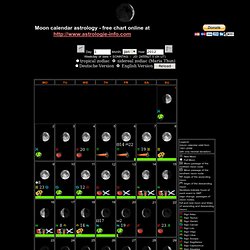
Greek Medicine: Welcome to Greek Medicine. Greek Medicine: HERBAL THERAPEUTICS AND MATERIA MEDICA. The therapeutic use of herbs and herbal medicines in the world's great traditional medical systems is guided by the principles and precepts of that system.
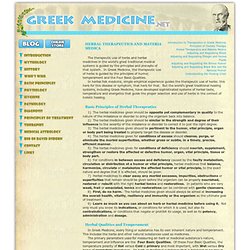
In Greek Medicine, the therapeutic use of herbs is guided by the principles of humor, temperament and the Four Basic Qualities. In herbal folk medicine, simple empirical experience guides the therapeutic use of herbs: this herb for this disease or symptom, that herb for that. But the world's great traditional healing systems, including Greek Medicine, have developed sophisticated systems of herbal taste, temperature and energetics that guide the proper selection and use of herbs in the context of holistic healing. In Greek Medicine, every thing or substance has its own inherent nature and temperament. This includes the herbs and other natural substances used as medicines. Certain broad associations between the Four Basic Qualities and particular tastes and therapeutic properties of herbs and medicines can also be drawn.
"UNDERSTANDING THE THEORY BEHIND GRAECO-ARABIC MEDICINE." Herbs in astrology, ruling planetst. Rowan Remedies » Herb Actions – Rowan Remedies. Herb actions give us an idea as to how the herbs act on our body.
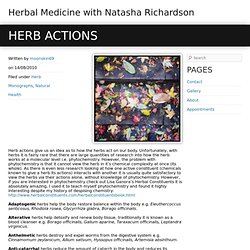
Unfortunately, with herbs it is fairly rare that there are large quantities of research into how the herb works at a molecular level i.e. phytochemistry. However, the problem with phytochemistry is that it cannot view the herb in it’s chemical complexity at once (its whole). As there is even less research looking at how one active constituent (chemicals known to give a herb its actions) interacts with another it is usually quite satisfactory to view the herbs via their actions alone, without knowledge of phytochemistry. However, if you are interested in phytochemistry check out Lisa Ganora’s Herbal Constituents it is absolutely amazing, I used it to teach myself phytochemistry and found it highly interesting despite my history of despising chemistry: Adaptogenic herbs help the body restore balance within the body e.g. Alterative herbs help detoxify and renew body tissue, traditionally it is known as a blood cleanser e.g.
Rowan Remedies » Artemisia vulgaris, Mugwort. Latin:Artemisia vulgaris Also Known As: Artemisia, Witch Herb, Old Man, Old Uncle Harry, Artemis Herb, Muggons, Sailors Tobacco, Apple Pie, Mugger, Smotherwort, Felon Herb, St Johns Plant, Cingulum Sancti, Johannis, Mother’s Wort, Maiden Wort, Muggins, and a whole host of assorted other names.
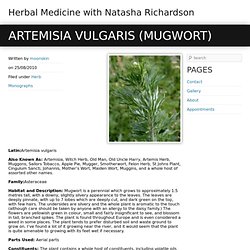
Family:Asteraceae Habitat and Description: Mugwort is a perennial which grows to approximately 1.5 metres tall, with a downy, slightly silvery appearance to the leaves. The Doctrine of Signatures, recognize herbs. Les propriétés, les correspondances ésotériques et spirituelles des plantes + la Phytothérapie + l'Aromathérapie. Astrology and Health: The Humours. This article seeks to explain the principles of humoral physiology, for when properly understood, humoral ideas are just as valid today as they have been for thousands of years.

Astrology and Health: Herbs and Symbolism. The silvery willow near water, demonstrating Lunar rulership Herbs and Symbolism: part 1 | part 2 | The Vital Force To the ancients there was far more to a plant than simply the tangible flowers, leaves and roots that could be seen, smelt and used.

The plant would carry a whole series of associations with mythology and mysteries that would be immediately understood by all. Today we have lost much of this understanding. There is immense importance in rediscovering the symbolism behind plants... The rational mind feels awkward about herbal lore, preferring to dismiss it as romantic nonsense and superstition. Learned minds of earlier centuries were trained to see life symbolically; everything in the physical world was seen as an expression of a subtler immaterial realm.
Subtle Life-Force. Astrology and Health: The Vital Force. Vitalism has essentially been the foundation of medical thinking since the classical times of Hippocrates and Galen.